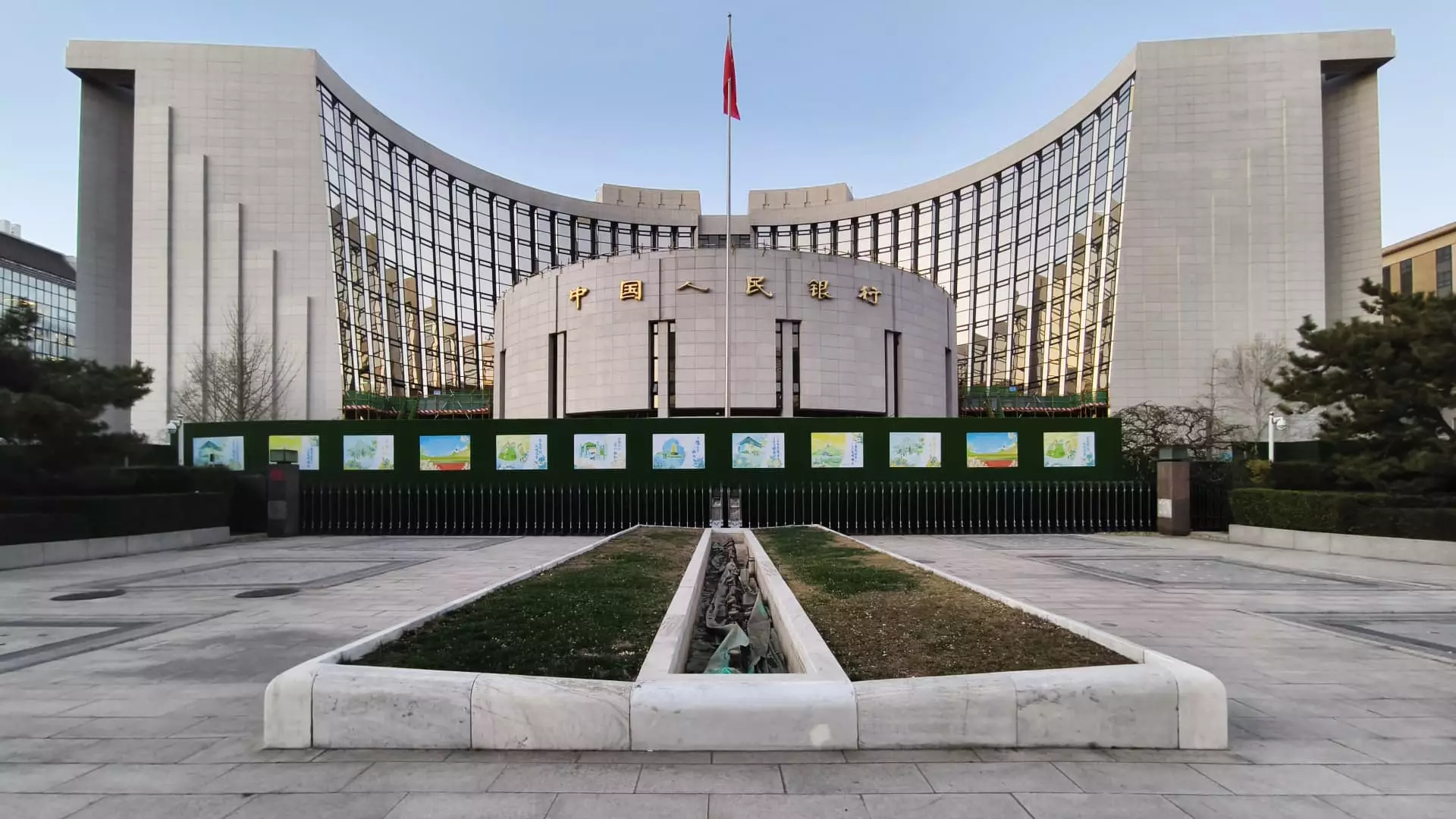In a decisive move that underscores the precarious balancing act faced by China’s economic leadership, the People’s Bank of China (PBOC) has decided to maintain its benchmark lending rates. This decision comes at a crucial juncture, as the nation grapples with the dual challenges of invigorating its flagging economic growth while managing a weakening yuan. The economic landscape is fraught with uncertainties, influenced not only by domestic factors but also by global monetary policies, particularly those enacted by the U.S. Federal Reserve.
Unchanged Lending Rates Amidst Economic Struggles
On a recent Friday, the PBOC confirmed its choice to keep the one-year loan prime rate (LPR) at 3.1% and the five-year LPR steady at 3.6%. These rates are critical— the one-year LPR significantly impacts corporate financing and household borrowing, while the five-year rate is pivotal for mortgage rates. This decision aligned with the expectations of economists surveyed by Reuters, who predicted stability in the lending rates.
Despite the anticipated rate cuts by the U.S. Federal Reserve, which recently indicated a reduction of 25 basis points, China’s central bank seems to have opted for a more conservative approach. The Fed, having adjusted its forecast for the pace of rate cuts in the coming years, has added a layer of complexity for China as it navigates its monetary policy amidst external pressures.
The interplay between U.S. monetary policy and China’s economic strategy has become increasingly significant. The Fed’s monetary easing could exert downward pressure on the yuan, prompting the PBOC to reconsider its strategy in the face of structural economic challenges. Farzin Azarm, a managing director at Mizuho Americas, emphasized a rather pragmatic approach by the PBOC, suggesting that the central bank is inclined to observe how the situation unfolds rather than intervene directly to bolster the yuan.
Azarm’s insights reflect a broader sentiment among analysts, who believe that the PBOC’s current strategy is largely influenced by external rates rather than internal objectives alone. Indeed, market reactions and global economic conditions will play a critical role in shaping China’s forthcoming monetary policy decisions.
Despite previous monetary easing measures, including reductions in interest rates and other stimulus efforts, China continues to confront entrenched deflation and sluggish consumer demand. Data reveals a persistently weak economy characterized by a slowdown in the property market—an essential pillar of growth in recent years. These factors create a precarious backdrop for the ruling authorities as they seek to stimulate economic activity.
The calls for sustained monetary easing have been echoed by several analysts, including Yan Wang, chief emerging markets strategist at Alpine Macro. Wang posits that continued interest rate cuts could alleviate deflationary pressures on the yuan and help initiate a recovery in consumption and investment. However, the pivotal role of fiscal policy cannot be overstated; the Chinese government may need to adopt more flexible fiscal measures to stimulate the economy effectively.
As forecasts suggest a potential deterioration of the yuan in response to geopolitical tensions and trade issues, particularly with the anticipated policies of a new U.S. administration, the environment for the PBOC remains fraught with challenges. Economic experts are projecting that fiscal easing will play a more significant role in promoting growth in China in the coming years. The need for a comprehensive strategy that integrates both monetary and fiscal measures is vital for creating an economy resilient to both internal and external shocks.
The steadfastness of the PBOC in maintaining its lending rates reveals a cautious stance amidst global economic fluctuations. While monetary policy adjustments may mitigate some immediate pressures, they must be complemented by robust fiscal policies to ensure sustainable economic growth. The Chinese economy’s path forward will demand agile adaptations to both domestic conditions and the ever-evolving international economic landscape.


Leave a Reply